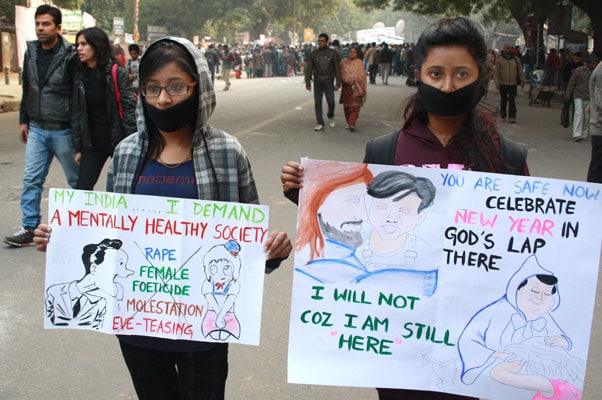Life
Home – Start the Revolution

The horrific crime touched a raw nerve with millions of young Indian women who are frequently groped, taunted and harassed.
The vicious gang rape and torture of a 23-year-old physiotherapy student by six thugs in New Delhi in December has ignited national fury and brought needed attention to the plight of women in India.
The horrific crime touched a raw nerve with millions of young Indian women who are frequently groped, taunted and harassed; thousands of people marched in spontaneous demonstrations, demanding tougher laws and calling for the death penalty and castration of rapists.
Unfortunately, the reckless and sensational media coverage of the crime has glossed over and mischaracterized the biggest threats to women in the country. Several media reports, for instance, have railed against the crime epidemic in New Delhi, which has been dubbed the “rape capital” of India and indeed the world. International media reports on the incident routinely cite a Reuters claim that “India is seen as one of the most unsafe places in the world to be a woman,” based on its charitable foundation’s survey of 370 so-called “gender specialists.”
These representations are patently false. New Delhi is not the rape capital of the world or even of India. Rape crimes per 100,000 resident in New Delhi (2.8) are half that in Chhattisgarh’s Durg-Bhilainagar (5.7) and well behind Bhopal (5.3), Jabalpur (5.0), Kollam (4.5), Gwalior (4.4), Indore (4.2) Faridabad (3.8) Agra (3.5), Ranchi (3.0) and Jaipur (3.0).
While India does record the third highest number of reported rape incidents in the world, the rate per 100,000 in India (1.8) is a tenth of the UK (28.8), (27.3), New Zealand (25.8) or Norway (19.2) and far lower than Finland (15.2), Germany (9.4), Netherlands (9.2), or Switzerland (7.1), according to data compiled by the United Nations Office on Drugs and Crime. Admittedly, the U.N. data only cover reported crimes and as many as 90% of rapes are unreported, according to experts. But that problem is as endemic to developed countries as to developing ones.
The point is not to minimize the brutality of the New Delhi gang rape or the severity of the persecution of women in India, but to underscore the reality that solutions to intractable problems cannot rest on faulty premises. The more crucial facts are that fewer than 20 percent of the 745 people arrested in 572 reported rape cases in New Delhi in 2011 were brought to trial. Of those tried, just 18 were convicted and 34 acquitted. The conviction rate in 2010 was even more abysmal at just 25% and almost three quarters of the men accused of rape that year in the city have yet to be brought to trial.
The urgency in India, it would seem therefore, is not for tougher laws, but for stringent enforcement of the ones already on the books. Gang rapes are punishable with 10 years to life imprisonment under existing law. Prosecutors have the discretion, which they have exercised in this case, to seek the death penalty when a victim dies.
The more intractable challenge in India is that rape victims are often shamed and intimidated by relatives, perpetrators and police to drop the charges and sometimes even to marry the men who assaulted them. Indeed, shortly after this incident, an 18-year-old woman who had been gang-raped during Diwali in Patiala in Punjab committed suicide because police and village leaders pressured her to withdraw her complaint and marry one of the rapists. Prosecuting police officials who refuse to file rape reports or coerce victims into dropping charges would be a more effective deterrent than the death penalty (which has been exercised just 46 times since India’s independence) for rapists.
UNDP’s Gender Inequality Index ranked India 129 among 187 countries in its measures of inequities between men and women in reproductive health, empowerment and the labor market. The World Economic Forum’s Gender Gap 2012 report, likewise, ranks India 105 among the 135 countries it evaluated.
The passage of more stringent laws that will only be enforced in the breach will serve to advance neither safety nor equality for India’s women.
What India requires, instead, is a national movement and a societal shift away from the patriarchal mindset and the male-dominated societal institutions and structures that subjugate Indian women in the home, in the workplace and in the community. And that revolution needs no bands and marches to India Gate; it can begin silently in every home.
